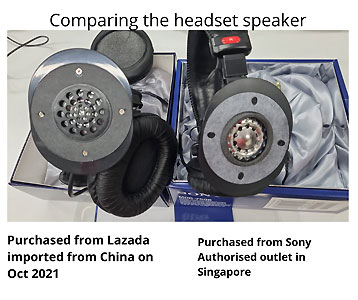Let’s put it this way -
Why are narrowband EQ corrections with foreign origin questionable and should be just left away?
ALL the measurement-based EQ curves from the internet are wrong above ca. 2-3 kHz, with very few single exceptions.
The measurement systems used do not supply data with a high enough VALID frequency resolution to justify narrow EQ bands.
You cannot EQ better than your measurement is.
One has to be aware of the limits of a measurement system to judge it’s results.
If you compensate above these limits you introduce errors, and leave the errors you want to compensate untouched.
• Even slight changes in headphone’s placement, on your head or the measurement coupler, yield totally different results for frequencies above ca. 2 kHz.
Which one to use then, and why?
Averaging various positions doesn’t help much, practically you don’t listen to an average, but a discrete positioning.
• The famous “Harman”- and other compensations are strongly smoothed, coarse approximations for a very certain setup, intentionally leaving out the fine details of the curve, therefore limit frequency dependent precision.
• People use Harman- or other compensations as if they were valid for other measurement rigs too, which they aren’t.
• Most compensations, except “Freefield” do use the room sound signals without any angular weighting.
Opposed to that the human brain does give a lot more weight to the direct sound from the source, above the room-reflected sounds.
• Your personal pinnae have different shapes, and therefore different HRTF (Head Related Transfer Function, angle dependent frequency response) than the measurement “ear”, coupler.
• Each human’s auditorial system permanently adapts to the sound colors it’s presented, like the eye adapts to light colors.
You have to “readjust” that from time to time with natural sounds to judge an artificial reproduction system.
The amount of ability for those adaptions is different for each individual, and there are limits.
• There are certain characteristics of a headphone or loudspeaker that are prominent and specific enough worth for correction, the famous 6 kHz peak of Sennheiser’s HD-800 comes into mind.
Even this one doesn’t annoy everybody.
Remark:
Didn ‘t you notice, all these Oratory, Auto EQ Project and most other Internet fine-tweak-EQ Setups simply sound like shit (sorry for the strong word) in the upper range?
Doesn't a simple Treble Shelf EQ or broadband Peak EQ, or a combination of both, adjusted to taste, give better results?
The measurements, BTW, can give a starting point for COARSE correction above 2 kHz, and below 2kHz measurements actually are quite valid, if your can achieve a good seal on your head.
Finally:
I do my EQs based on measurements on my own head, using my own compensation curve.
Even this is limited and has to be adjusted by taste over a period of several weeks or months at least.
